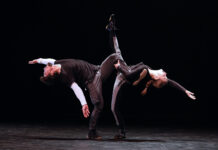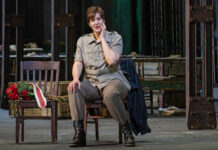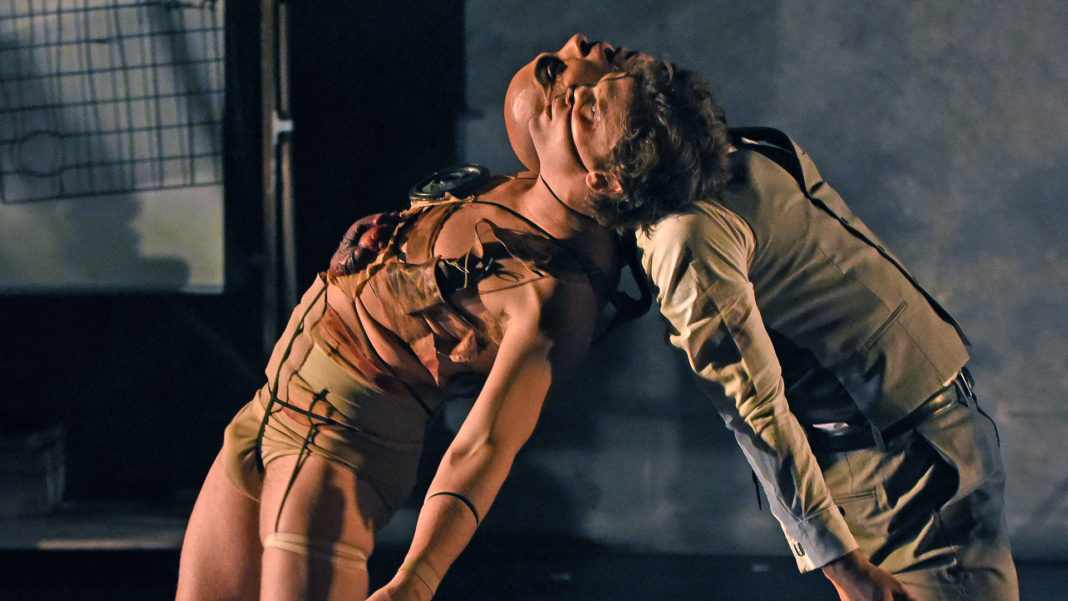In my preview of Frankenstein, now playing at The Wallis, I mentioned that this isn’t Mel Brooks’ version of Frankenstein nor is it James Whale’s (the director of the classic 1931 film). What it is however, is Mary Shelley’s Frankenstein, hewing closely to her text, but perhaps not how she envisioned it. This production is a reflection of the minds of Mat Sweeney (credited as creator, stager and composer) and Sebastian Peters-Lazaro (designer and choreographer.) Together they are Four Larks, a Los Angeles-based company that combines theatre, music, visual art and dance into unique presentations.

I spoke to Mat and Sebastian separately the morning after the world premiere of Frankenstein. In our conversations we talked about why they choose to create their own Frankenstein, the topicality of Shelley’s novel today and the value of dark tales in troubled times.
What follows are edited excerpts from those two conversations. They have been edited for clarity and length.
Simply put, why Frankenstein and why now?
Sebastian: I think when we started it was, in part, just looking at a novel that such wide-reaching impact on our society at large. We work with known mythologies as part of our adaptation process, so as the audience comes in there is an initial starting point.
Mat: When the idea was brewing I read the book again and it felt like she’s writing about America in 2020. It felt resonate as a metaphor for climate change and how technology encroaches on our life and becomes a sort of monster.
Sebastian: It was exciting to be walking in her foot steps and trying to uphold her intents or perceived intents.
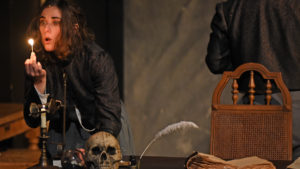
What do you think Mary Shelley has to tell us about the world we live in today?
Mat: I think she’d be horrified and delighted. She was writing at the beginning of the 19th century at the dawn of the industrialized world. I think it would have been impossible of her to conceive all of this. But at the end, so little has changed and the novel is about humans taking responsibility for their creations and what they owe to one another.
Sebastian: Overall to me what is in the novel is a story about the relationship between the individual and the larger world. What is your responsibility to the plant and the people around you and to society at large versus just kind of narcissistic individualist pursuit of wealth at the cost of people around you.
Is there a sense of irony in this work that a cautionary tale about technology employs as much technology as your show does?
Sebastian: (Laughs) I don’t. I think to me it is a cautionary tale about creation and pursuit of the next thing – scientific advancement and knowledge out of context without any sense of thought about the society it is being made in and the benefit of humankind. To me it’s not about rejecting technology. It is important to be using technology at its fullest and keep making those advances as long as we are looking at how they benefit us all and now just one person.
Mat: The content of his material it felt appropriate to use these resources [at the Wallis.] We brought ourselves working up in warehouses and alleyways and being very low-tech. That was the core of our aesthetic, to have a Do-It-Yourself impulse. Having access to sound and lighting is a whole different monster.
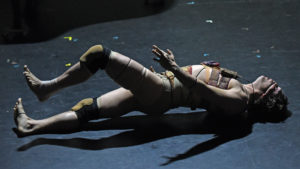
One of the pivotal moments in the show is when Creature comes to life. Can you talk about putting that sequence together.
Sebastian: Max Baumgarten [who plays Creature] is a longtime collaborator and an extremely talented mover. The point of that section was to be bringing the audience on the journey of the creature figuring out how to piece tighter being a sentient being. How do my limbs move and what do they do? The process started with a conversation and then Max doing improv and offering all of his movement vocabulary in those veins and us working together to put it into a sequence that was communicating the story we were telling.
Is Frankenstein a darker work for the troubled times in which we live?
Mat: Our concern about approaching Frankenstein is that it is such a dark piece. We’re wary of putting something out in the world that is so full of darkness. So we tried to find the lesson in the novel and a pathway to hope and use it is an opportunity for illumination. We’re not shying away from the darker elements and that is essential. We want to make sure it isn’t hopeless.
Sebastian: We’re working across various disciplines to create a cohesive story that communicates to and moves our audiences. I hope that the goal is to bring an audience in and bring them into a conversation and not beat them over the head with warnings or horrific prognosis for the future, but to spark a conversation and have it continue forward.
Frankenstein continues at The Wallis through March 7th.
Main Photo: Max Baumgarten and Kila Packett in Frankenstein/Photo by Kevin Parry (All photos courtesy of The Wallis)




